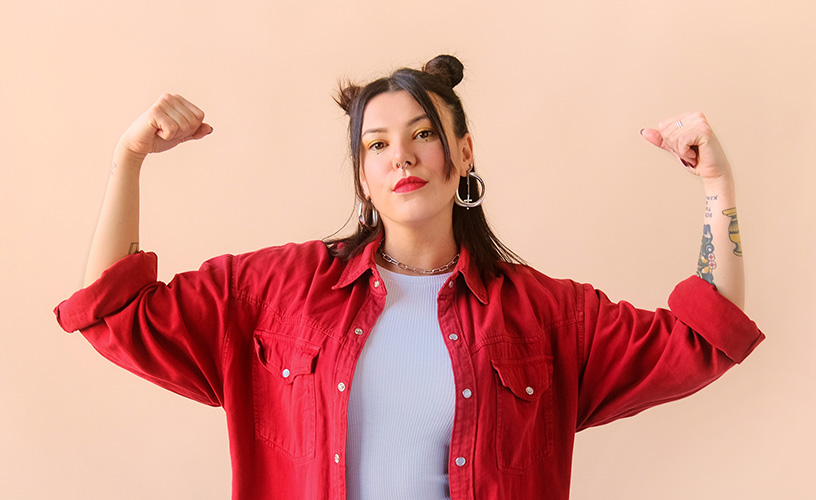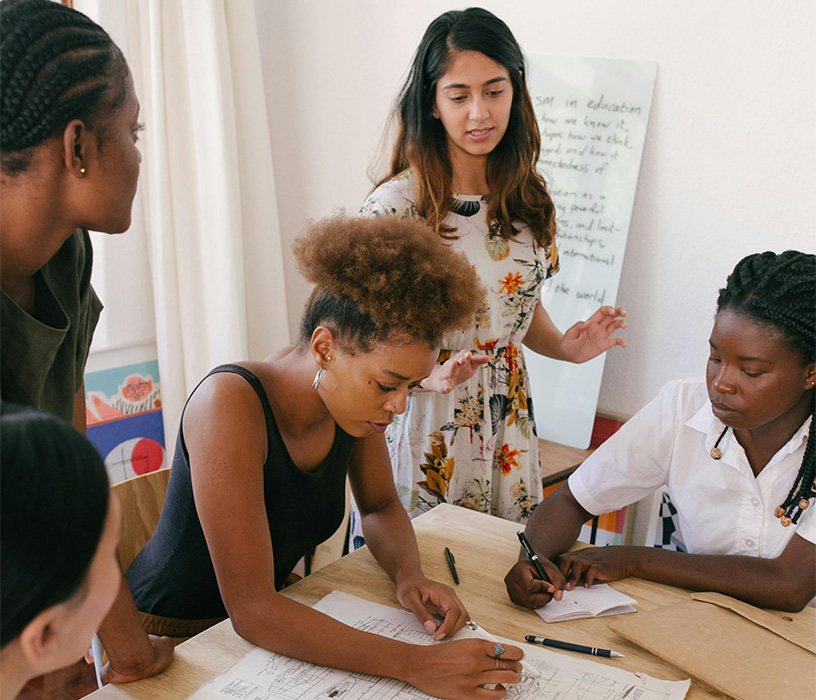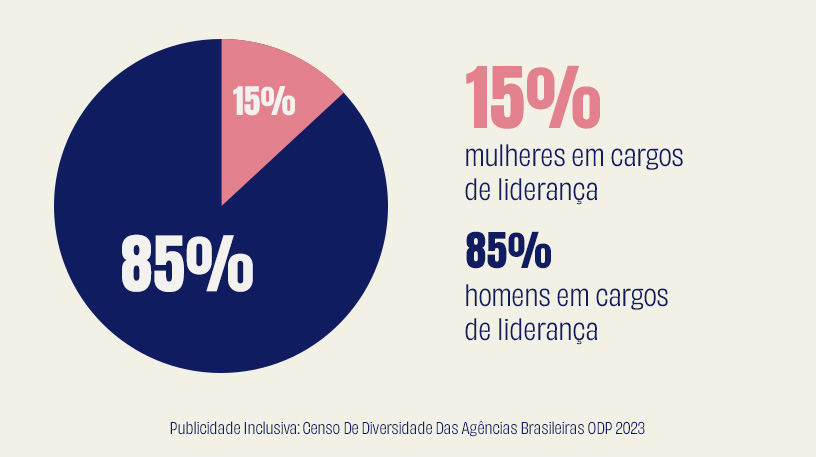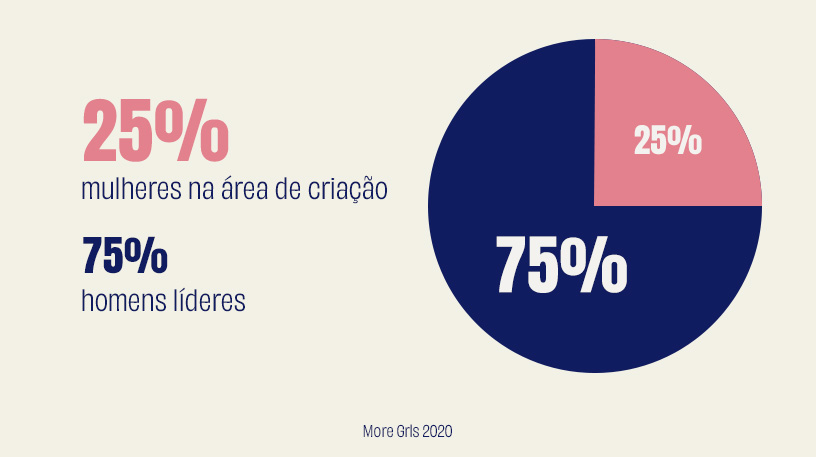
Women’s Day, an overview beyond advertising
11/04/2024 | Agência Fome | PostsMarch is over, but the hangover from Women’s Day is still with us. I know, it sounds cliché, but it’s reality. Being a woman is a daily, tiring, complicated journey. Half of FOME’s cast is here to prove it. We are a 50% female agency, with 60% women in leadership positions.
All of them are giants, who play their roles masterfully and stand out for being themselves. For us, this is synonymous with excellence.
But after this reflection, a little bug stuck in my ear: it’s all well and good to talk about Women’s Day, about the rights we’ve conquered and what we still need to conquer, but how has this journey been so far? Is today’s reality calm and favorable for a real “Women’s Day”? And most importantly — what is the situation for women in the wider world of advertising?
Let’s work this out together? To celebrate our struggle and achievements every day, regardless of the date we’ve been given.
Women in the Job Market
Let’s go back to the 19th century. It was at this time that women began to enter the job market and seek opportunities outside the home. Along with this movement came gender discrimination, limitations on career advancement, and female stereotypes.
The scenario has improved, the 20th century brought advances — but we have to be honest, we still have a long way to go to achieve the minimum ideal of equality (perfection is a ridiculously distant word in this context). And that’s not even talking about the main problem for the development of women’s careers: the invisible workload, which was only the role of women until their inclusion in the market, and still remains so today.
After this brief historical introduction, let’s narrow the topic down a bit. After all, we are in Brazil, so let’s focus on that. According to the IBGE, there are many women in the job market (more than 53%, to be exact). But even with all this presence, there is still a wage inequality. On average, we earn 20% less than men, according to the IBGE.
Despite the hardships and difficulties, we have been closely following small developments. Some companies are investing in women’s potential and giving women opportunities to shine in prominent positions.
In short: we have seen many changes in the last decade, but there is still a long way to go before we can achieve true equality. Globally, women still represent only 38% of human capital versus 62% of men, according to the study “The cost of gender inequality” by the World Bank.
Now, what will this scenario be like for women in the advertising market?
Women in Advertising: What is propaganda and what is truth?
The world of advertising is modern, innovative, cool and liberal, but the truth is that it also has its challenges.
Looking at it broadly, how many stereotypical female representations do you see in campaigns? And behind the scenes, are we managing to advance in our careers? The truth is that the advertising market also contributes its share of the blame when it comes to women and the creative market.

Source: Pexels
Continuing along this linear line of reasoning from the previous topic, we can see that in many agencies, prominent roles or positions are still occupied by men. Think about it: how many prestigious campaigns have been created by women? And to reinforce this statement, we point to a survey by the Brazilian Association of Advertising Agencies (ABAP), which highlights that only 44% of leadership positions in advertising agencies are occupied by women.
Within agencies, despite the apparent gender equality in the staff, there is a huge discrepancy when we analyze strategic and creative positions. According to the survey “Inclusive Advertising: Diversity Census of Brazilian Agencies ODP 2023”, carried out by the Observatory of Diversity in Advertising (ODP), 85% of CEO positions in advertising agencies are occupied by men, while women represent only 15%. According to the More Grls survey, from 2020, women occupied only 25% of the total professionals in the creative area, while men were 75% of the leaders.


The lack of female presence in senior leadership, both in agencies and in the creative area, directly reflects on the final result of campaigns. And because we occupy this small portion, we often see media that portrays women in a completely fragile way, which reinforces somewhat outdated and harmful ideas about our role in the workplace and in society in general.
The result of this? We continue to tread on old stereotypes, which limit the possibility of female perspectives in advertising representation, with the eternal perpetuation of gender norms that are harmful to equality.
But is it possible to change this? Of course! Despite these challenges, women in the creative world are managing to present award-winning campaigns (see Nivea Doll or Inequality Balls) and redefining the advertising environment with unique visions.

Source: Inequality Balls
These movements have called companies to action, encouraging them to set a goal of reaching 50% women in leadership positions. The UN Global Compact itself promotes the “Women Lead” movement, which establishes a commitment to have half of senior leadership positions filled by women by 2030. In fact, large companies such as Mondelēz, Unilever, AlmapBBDO and P&G have recently highlighted the consequences of having 50% of their executive and strategic leadership positions in the hands of women: more comprehensive and solid leadership, more plural companies focused on diversity, resilience, innovation and engagement, updated policies and significant benefits, creating a work environment that supports the balance between personal and professional life, which contributes to low turnover of creative teams, greater engagement and higher productivity and delivery of increasing results in all areas.
We recently invited some of our leaders to tell us about the main role they play in the advertising market. For Carol Brandão, our Customer Service Leader, it is “fighting so that future generations do not experience gender inequality and are not diminished simply because they are women. Being a woman means proving to yourself every day that you are capable and worthy of being valued.”
“We are constantly being subjugated or having our authority questioned. Today I want to open space for other women to act, so that there are more and more female role models in various professions and positions of authority.” adds Maila Atan, our Project Manager.
And I, Marcela Neilly, Creative Leader at FOME, believe that we need to find new ways to exercise creativity within a market that is still misogynistic and old-fashioned.
It is important that more and more women feel confident to be in executive positions and fight for success in their careers. That is why we wanted to shed light on this topic, to contribute to expanding this discussion that often goes unnoticed by the major advertising outlets we know.
And the conclusion is…
Regardless of your field of work, the job market is constantly evolving when it comes to women. There are still many barriers to break, but we have been making greater strides in recent years.
For FOME, support is essential so that all women can continue to advance and break barriers in advertising. The more we unite, the faster we will be able to change this dark history.
We will continue to fight for gender issues and support our female colleagues. Lift up women, embrace the work of your peers. Only then will the future of the market have any chance of being truly inclusive and equitable for everyone.
Yes, there are companies that are really looking to the future. And it is not only feminine, but also brilliant.